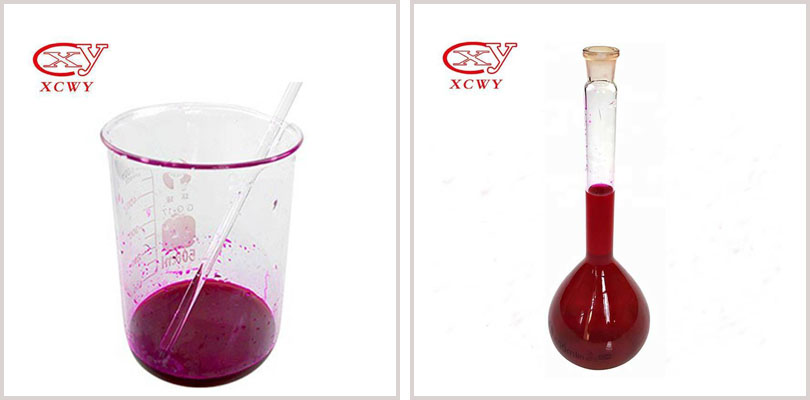In the dyeing of leather, cotton, linen, paper and other materials, a dye called Basic Rhodamine B is often needed. It belongs to a synthetic dye and is suitable for many industries. When using Basic Rhodamine B to dye material, uneven dyeing often occurs, so what is the cause? In order to ensure the dyeing quality, how should we use Basic Rhodamine B to dye? To solve these problems, we will answer them one by one.
Reasons for uneven dyeing of 310 Rhodamine B Extra powder
1. Uneven stirring of Basic Rhodamine B will result in uneven dyeing.
2. The different speed and amount of dyeing promoter added to Rhodamine B dye in condiment will also lead to the appearance of color difference, so we should strictly follow the rules when dyeing.
3. Uneven dyeing will occur if the follow-up treatment is not done well and the float removal is not enough.
In order to ensure the color quality of Basic Rhodamine B, we should operate according to the requirements in dyeing.
1. The blocking effect of Basic Rhodamine B on acidic groups of acrylic fibers can be achieved by adding retarder. The saturation of acrylic fibers can be achieved by adding retarder, and the leveling effect can also be achieved by dyes with fast dyeing speed and poor dyeing migration.
2. The uniform dyeing of acrylic fibers can be achieved by prolonging the heating time, and the temperature should be well controlled during Basic Rhodamine B dyeing. These methods are suitable for bulk fiber dyeing with larger bath and wool-nitrile blended yarn dyeing.
In practice, cotton and viscose knitted fabrics are usually dyed at about 95 ℃. The dyeing temperature of silk knitted fabrics is lower, because excessive temperature damages the luster of the fibers, and the appropriate dyeing temperature is 60-90 ℃. Appropriate reduction of dyeing temperature and prolongation of dyeing time with direct dyes are beneficial to production.
Post time: Jun-23-2019





